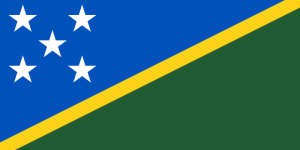 What climate changes are occurring in the Solomon Islands, and what’s next?
What climate changes are occurring in the Solomon Islands, and what’s next?
- Sea Level has risen: Since 1993, sea level around the Solomon Islands has risen by a massive 8mm per year. Amongst other things, this is impacting food security, with important root crop ‘taro’ dying due to the rising salty waters.
- Temperatures continue to rise: Since 1951, the temperatures have increased by 0.15°C per decade, leading to more hot days – and more pressure on food security.
- More extreme rainfall days: Model projections show that extreme rainfall days will likely occur more often.
- Less frequent, more intense storms: In the Solomon Islands region, an increase in the proportion of more intense storms is likely by the end of the 21st century.
- Relocation?: An issue of national debate in the Islands has been the relocation of communities from the nation’s outer islands. Without significant mitigation efforts around the world, this unpopular option may become a reality.
——————————————————————
More detailed information from the Australian Government’s ‘Pacific Climate Change Science Program’ can be downloaded here –> Solomon Islands Climate Change Factsheet PDF.
What are the Solomon Island’s policies on climate change?
The Solomon Islands Ministry of Climate Change, Disaster Management & Meteorology released their ‘National Climate Change Policy‘ document, which outlines their policy responses to the challenges climate change presents for the 5 year period of 2012-2017. Click here to read it.
——————————————————————
We’re currently in contact with a number of our team coordinators, representatives and volunteers on the ground in the Pacific Region – compiling information on the key climate issues facing the country, what our teams are doing locally, and how local groups are standing up and confronting the challenge of climate change.
As we compile more information, this link will be appropriately updated. So check back soon!
350 Pacific team
